Words Amicia de Moubray Photographs Kent Archaeological Society
‘It was extraordinary. I’d only being digging for ten minutes, when I realised that a Bronze Age hoard had been found,’ says Keith Parfitt, Chair of Fieldwork Committee, Kent Archaeological Society. He is recalling the annual Medway History Finders Metal Detecting Rally in September 2017, on the Lees Court Estate, near Faversham. Three hundred keen detectorists searched 500 acres and, lo and behold unearthed no less than five hoards of Middle to Late Bronze Age metalwork. Three had been spread by the plough over the years, but the other two remained largely in situ.
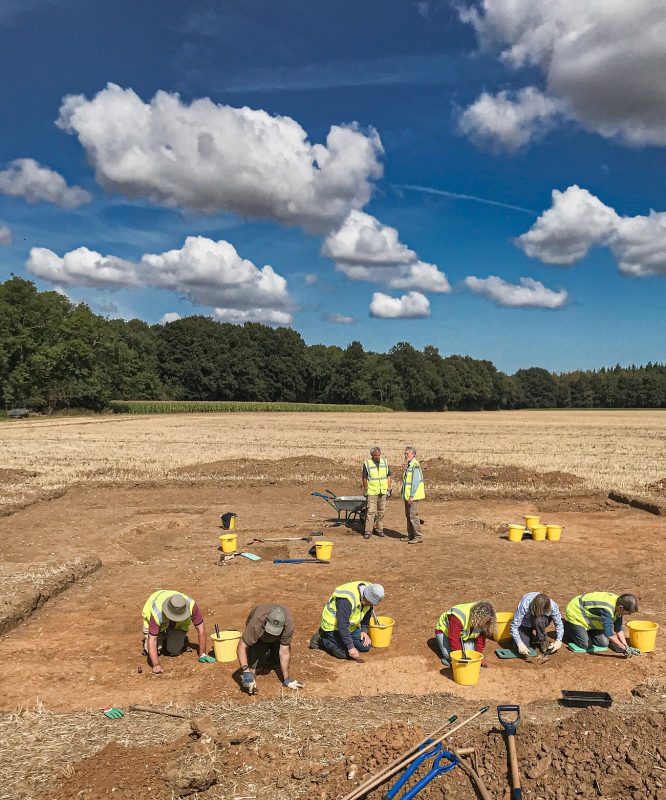
Community archaeological dig in Woodscourt field on the Lees Court Estate near Faversham
To the casual onlooker, Stringman’s Field looks like any other ploughed field, but lurking just beneath its surface, is evidence of life thousands of years ago in the form of at least one Bronze Age round barrow dating from c2000 BC. It is thought that it was maintained and possibly used until c600 BC.
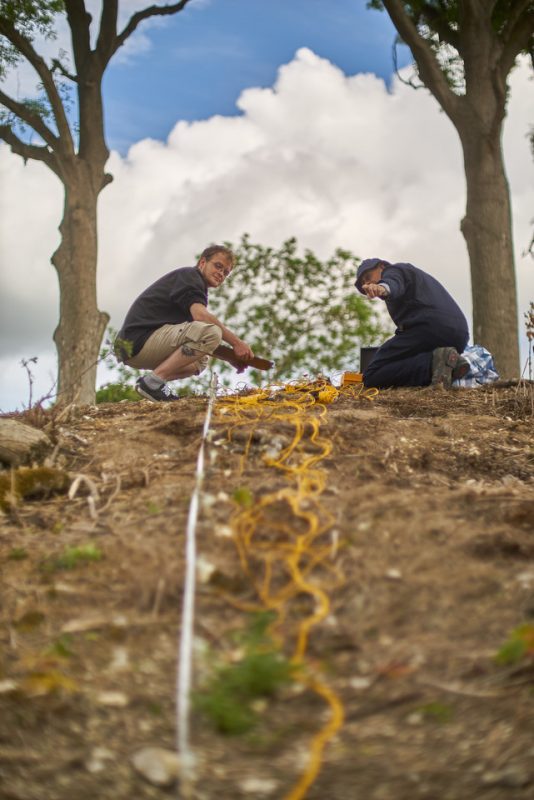
Archaeologists undertaking a Geophys survey of Bronze Age Monument
What began as a tentative exploration, could become the largest archaeological dig in Britain. Some days there are up to 30 volunteers and professionals digging away. ‘It is a fascinating multi-period prehistoric landscape possibly dating back as early as 250 000 BC. So far we have only scratched the surface but we now have evidence of a whole batch of early Bronze Age burial mounds along the escarpment. There are years of work ahead of us here, which is expected to last in excess of 15 years’ says Clive Drew, General Secretary of the Kent Archaeological Society. The isolated location of the site explains how it has, until now, escaped the attention of Kent antiquaries.
The Countess Sondes, Steward of the Lees Court Estate, is passionately interested in the ancient history of the Estate.
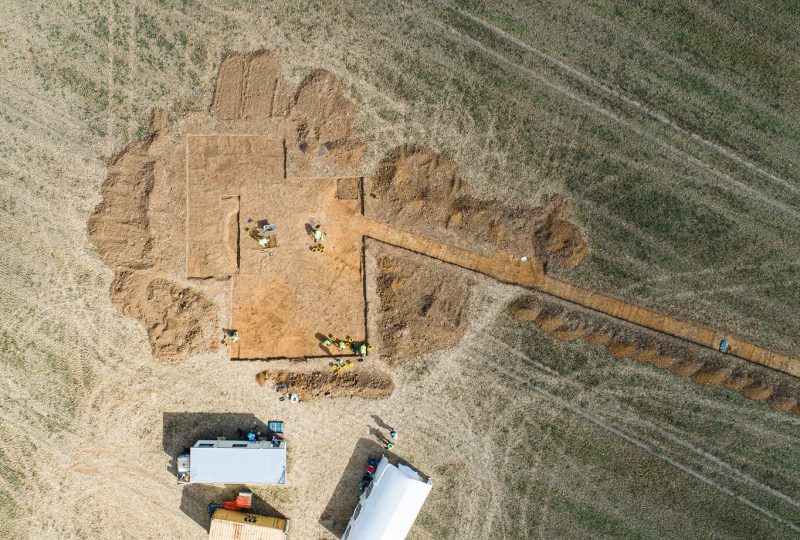
Aerial view showing the extensive archaeological dig a couple of miles from Faversham
To walk along the extensive 30m x 30m trench currently being excavated is to feel an astonishing link with the family who trod the same ground all those years ago. I was surprised to learn that Keith and Clive think it was home to just one family of between 20 and 30 people, not a larger settlement. As we strolled along, my eye gradually became attuned to spot subtle changes in the colour of the soil, indicating for instance, where cooking had taken place. Here, the earth was scattered with fragments of vessels and ubiquitous pot boilers. Pot boilers are flints that were heated up in a fire and then placed into cooking pots to heat up the contents. In those far off days the cooking pots were so poorly fired that they would have shattered if placed over a hot fire. ‘There weren’t any dustbins in those days, everything just got thrown in a pit,’ says Clive. It is an extraordinary feeling holding a pot boiler and realising that it’s the first time for literally thousands of years that it has been held by a human.
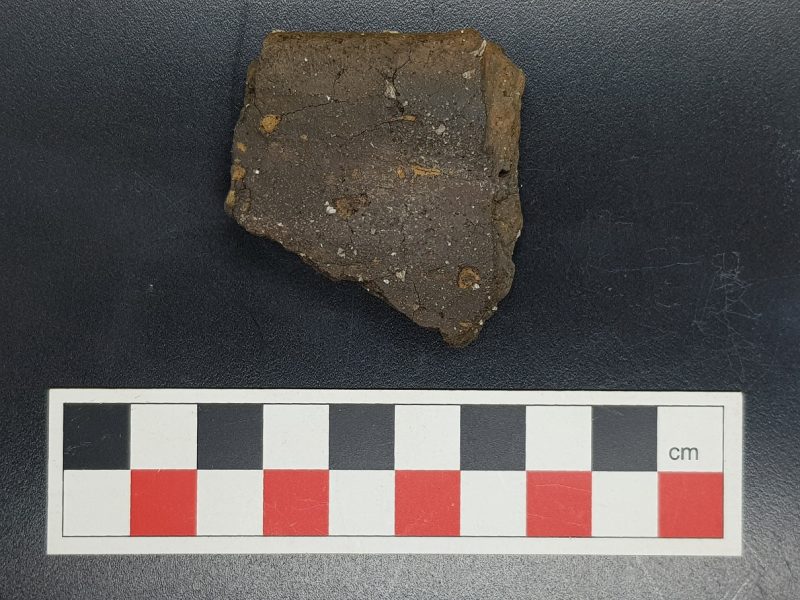
Rim sherd from an Early Neolithic round-bottomed bowl, dated c.3800-3600BC – found within ditch fill of a Neolithic Monument in Stringmans field
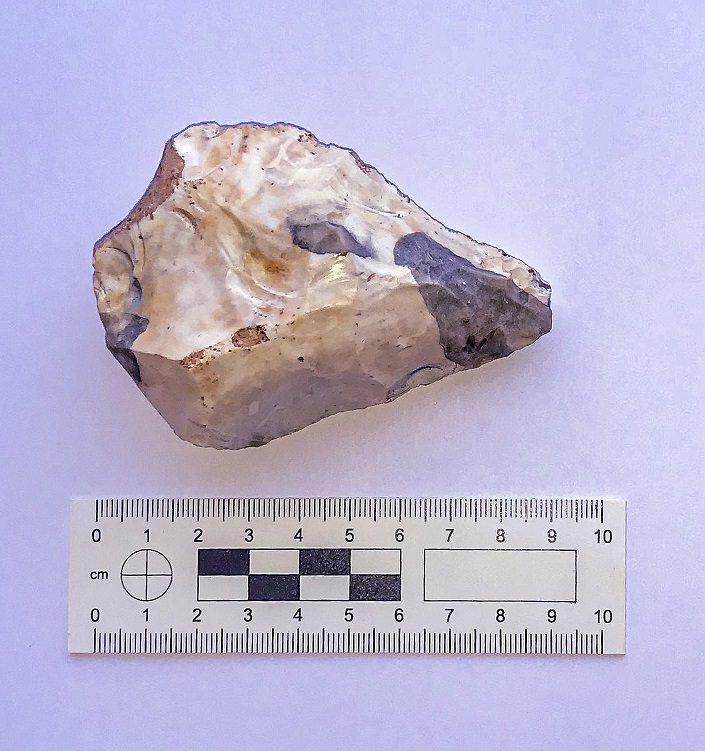
Acheulean hand axe from 250,000 B.C. flint
The Lees Court archaeological dig come about when the estate was working with Kent Underground Research Group (KURG), an organisation affiliated to KAS. The Estate needed advice on a large denehole, (a denehole are widely believed to be ancient chalk mines used as a source of unpolluted chalk to spread on fields for marling). Discussion followed over what was thought to be a Burial Mound and then a request to KAS to help oversee the Medway History Finders Metal Detecting Rally in 2016 and 2017 brought about the start of the partnership with KAS.
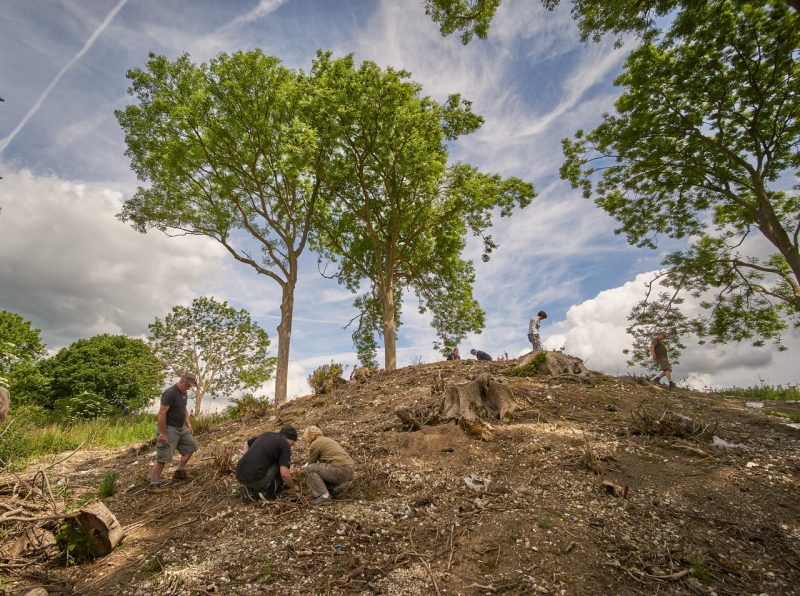
Archaeologists cleaning and investigating the Bronze Age Monument
Lady Sondes became enthralled by all that the Society does and agreed to become a Patron. The Society explained that they were looking for a way to return to a more ‘hands on’ archaeology approach and asked if they could embark on a significant project to survey the entire Estate including the Faversham and Oare Creeks and the Swale Estuary. Always game for new exciting ventures, Lady Sondes agreed to their help to unravel the history of the Estate and the land it now occupies. ‘Here is a nice big chunk of land in the middle of Kent for the society to excavate,’ says Keith. As well as the Stringman’s Field dig, the KAS is investigating a 57 hectare site around Badlesmere Church, also on the Estate, with the aid of a geophysical survey. Tantalisingly, the celebrated 18th century Kentish antiquarian Edward Hasted visited the site and mentioned changes in crop colours that may indicate the remains of other buried structures nearby. KAS is hoping to find the site of Badlesmere castle.
Extraordinarily eminent in their field, both Clive and Keith play down their expertise, emphasising time and time again that much of archaeology is ‘pot luck’. But there is more interest in the subject than there used to be. Keith, who first became interested in archaeology when ‘I was a tiddler,’ attributes it to the fact that ‘people are terrified by the speed of the modern world. Archaeology is an anchor to see where they have come from’. He says: ‘Apart from technology, humans today aren’t any further forward than our Bronze Age counterparts.’
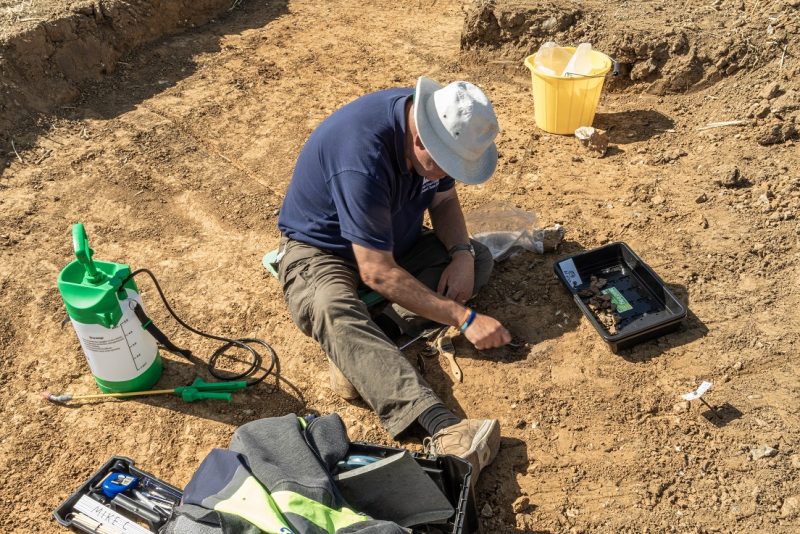
Excavating an archaeological site is painstaking work
The Kent Archaeological Society is always looking for volunteers. They must be prepared to spend a minimum of two or three days excavating and, if they are lucky, to participate in a field walk – a line of people picking up whatever they find. ‘It’s a wonderful social event,’ says Clive. At any one time, there are several people on site and in the week, many are retirees. The day I went there were a retired schoolteacher and a civil servant. ‘Nothing can beat the first find, it’s an emotional feeling,’ says Keith. Even on his days off he is to be found at the site, such is his passion.
Both Kent and Christchurch universities in Canterbury are involved. The School of Classical and Archaeological Studies at the University of Kent has a dedicated site.
The majority of the work consists of painstakingly chipping away for hours and hours with a small hand trowel. Any finds are carefully washed in a tent on site before being labelled and bagged up and those which require further investigation are forwarded to national experts. Meticulous records are of paramount importance and each little find is carefully recorded. The four Bronze Age hoards are currently with the British Museum being identified and recorded. Once the British Museum complete their recording, the Estate has gifted them to Dover Museum.
For information about volunteering: www.kentarchaeology.org.uk